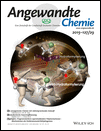The Retro-Hydroformylation Reaction†
We are grateful to Prof. Clark Landis (Univ. of Wisconsin, Madison) for valuable comments. A part of this work was conducted in the Research Hub for Advanced Nano Characterization, The University of Tokyo, supported by the Ministry of Education, Culture, Sports, Science and Technology (MEXT; Japan). This work was partly supported by a Takasago International Corporation Award in Organic Synthetic Chemistry (Japan) and a Sasakawa Scientific Research Grant from The Japan Science Society.
Abstract
Hydroformylation, a reaction that adds carbon monoxide and dihydrogen across an unsaturated carbon–carbon multiple bond, has been widely employed in the chemical industry since its discovery in 1938. In contrast, the reverse reaction, retro-hydroformylation, has seldom been studied. The retro-hydroformylation reaction of an aldehyde into an alkene and synthesis gas (a mixture of carbon monoxide and dihydrogen) in the presence of a cyclopentadienyl iridium catalyst is now reported. Aliphatic aldehydes were converted into the corresponding alkenes in up to 91 % yield with concomitant release of carbon monoxide and dihydrogen. Mechanistic control experiments indicated that the reaction proceeds by retro-hydroformylation and not by a sequential decarbonylation–dehydrogenation or dehydrogenation–decarbonylation process.




